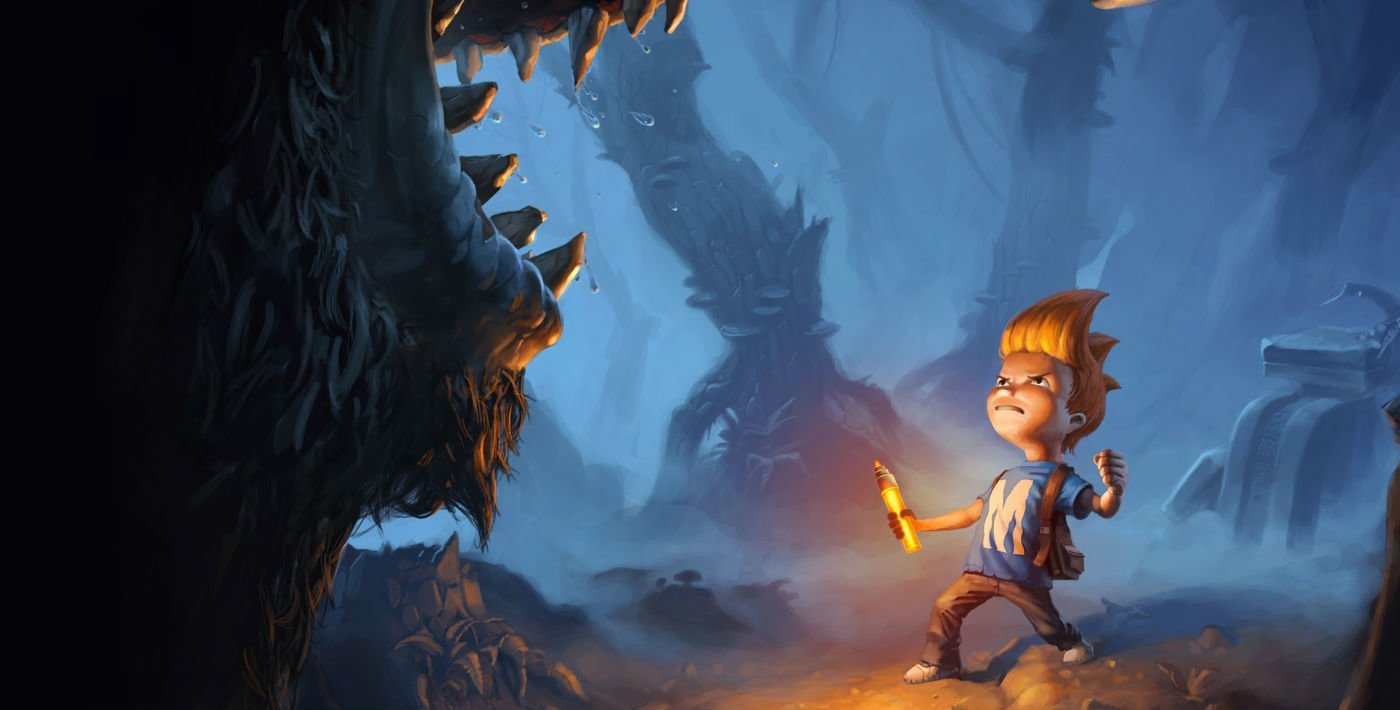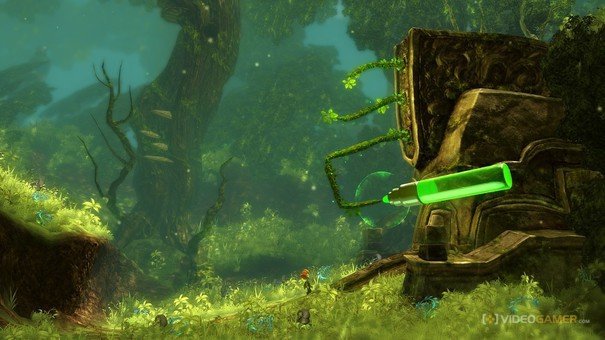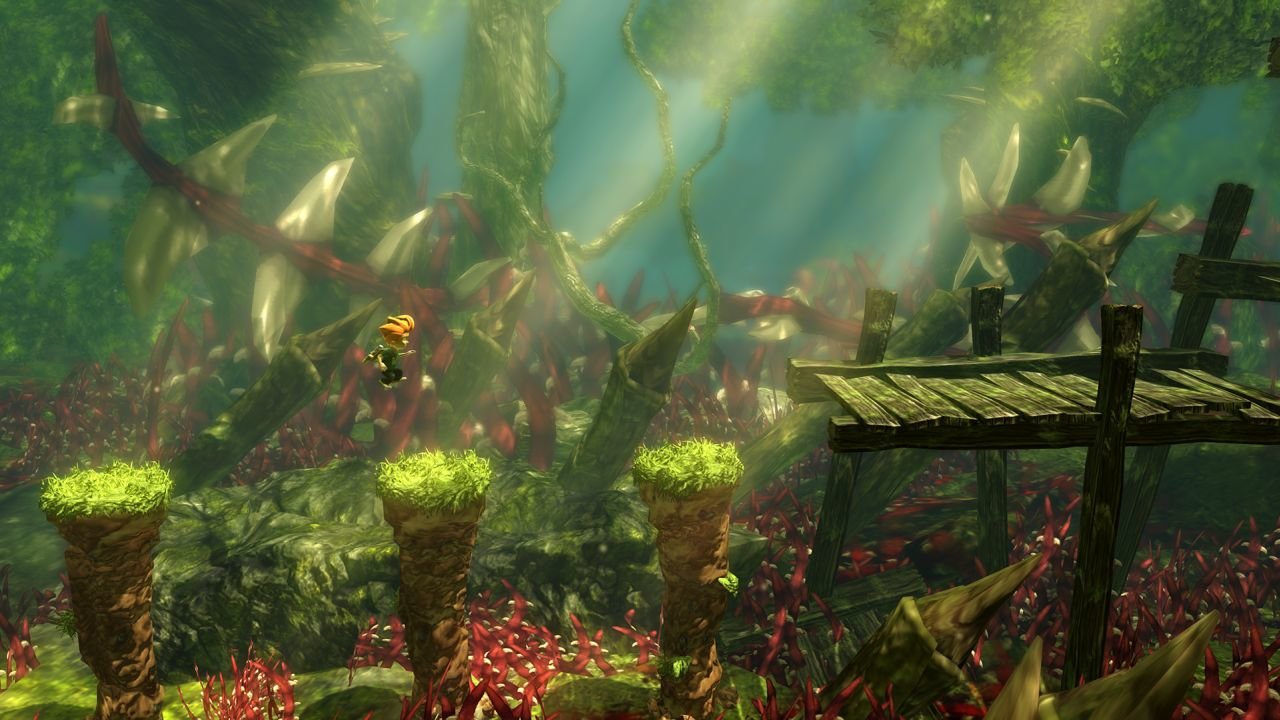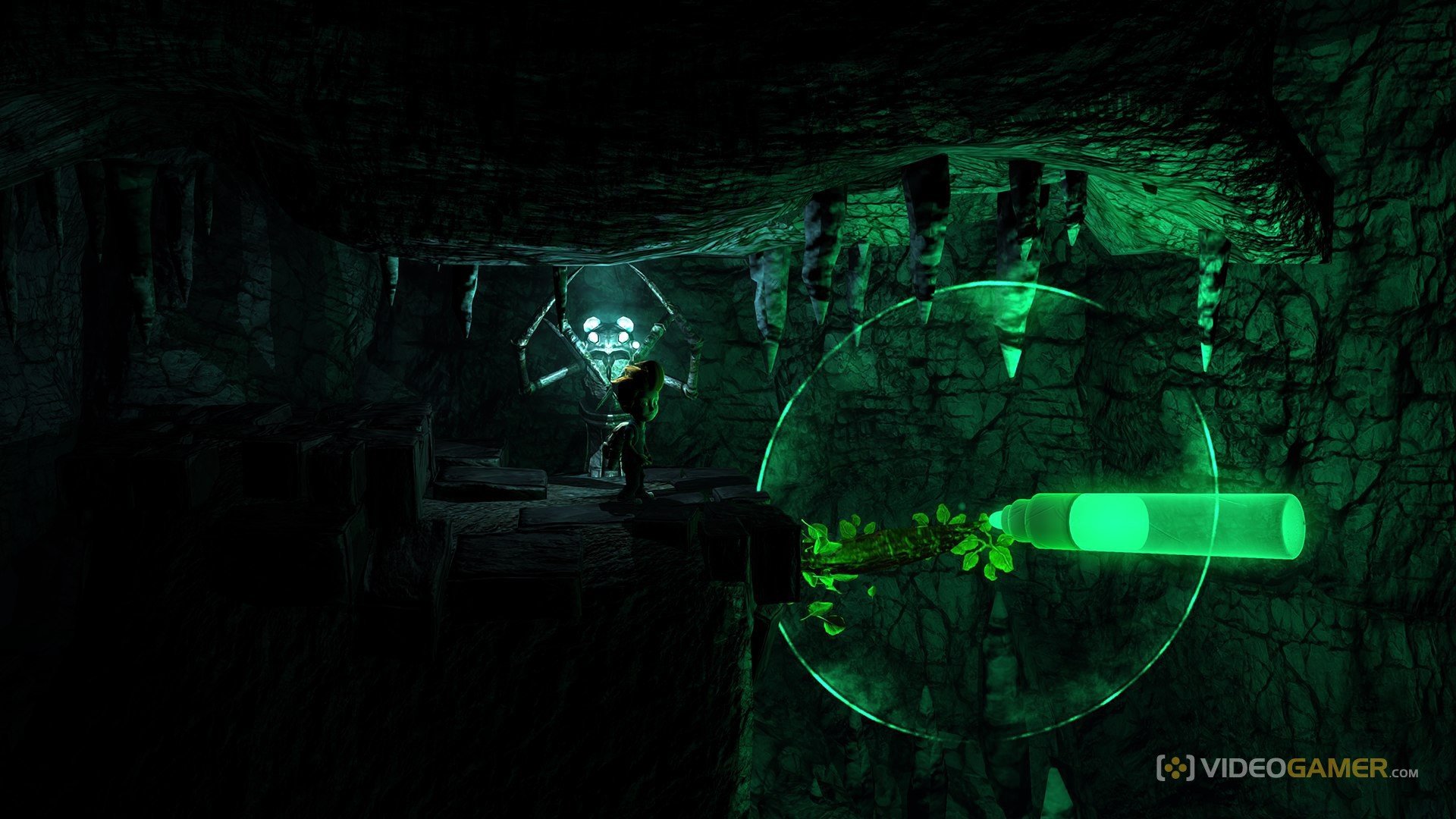Outside of some Nintendo big guns, 2D sidescrolling platformers rarely get the triple-A treatment they once enjoyed. They have, however, found a home in the indie space as smaller, cheaper downloads, an encouraging development if you’re worried about how videogame blockbuster economics affects entire genres. Despite presenting a format that’s been around since arcades, Max: Curse of Brotherhood is a game that exists thanks to the modern controller and development environment.
I’ve seen Max‘s visual style compared to Pixar, but let’s not go overboard here. It’s bright and cartoony, kid-friendly CGI, but it’s more Jimmy Neutron than Up. This isn’t at all a knock on the graphics. They set a rich, adventurous tone with characters that pop against lush backgrounds. All we get in the way of exposition is titular hero Max, in an act of whimsical malice brought about by the presence of little brother Felix, recites an incantation (found, of course, on the internet) to vent his frustration. Immediately, a magic portal opens and Felix is snatched right from their bedroom. Angered and motivated by this unexpected over-escalation of sibling justice, Max dives through the portal after him.
You don’t really need more story than that for a game like this. From here on, with mercifully few cutscenes, Max is a 2D action platformer with a few puzzles that slowly transforms into a puzzle game with a few action sequences. This change is due to a steady diversification of the game’s core mechanics, which are about using a “magic marker” to freehand draw objects with different properties into the world around you. This is an interesting concept for a game – usually all the objects needed to complete challenges are already in-game, or are created by assembling parts like Legos. Max‘s mechanics call for (the most rudimentary) art talent to create shapes you’ll need out of thin air.
From there, most of the game revolves around using the environment and your on-screen creations to get from Point A to Point B and maybe get the drop on a few enemies on the way. Need to get to a high platform? Pull a rock pillar up out of the ground. Need to swing across a ravine? Pull a branch out of a wall and pull a vine out to attach to it. Some of these abilities rely on your freehand skills with a thumbstick (freethumb?) more than others, and much of the difficulty curve comes from getting the hang of drawing them in exactly the right way. This is what I meant by a modern controller – the switch between familiar plaforming motion and on-screen line-tracing is a trick only the thumbstick can pull off. Sometimes the game is a bit more picky with shapes than others, and I think my biggest frustrations came from occasional inconsistency. Still, it’s typically pretty forgiving of minor imprecision. A slightly lopsided box will still get you up to a previously unreachable platform, an oblong wheel will typically roll well enough, and you usually won’t need an exactly-measured curve to launch a projectile with the perfect arc.
This is not at all to say the game is too easy. Max dies less than Meatboy, but more than Mario. I did get a bit of a grim chuckle out of how much this game beats the crap out of a 12-year old boy. It’s nothing gory, but he screams in horror as he plummets to his death or as living vines drag him away. It’s a bit dark, but the game doesn’t linger on child-killing, instead restarting you instantly at the beginning of the most recent puzzle. Platformer purists might roll their eyes at the lack of consequences for failure, but the game ramps up the challenge enough that you’ll find parts that eat up a lot of your time and effort anyway.
The game shines the most in its quick changes of pace. I would often find myself banging my head against a particularly frustrating puzzle for minutes on end, only to be confronted with a sprinting, pellmell chase scene next. For a pretty kiddy tone, Max can get pulse-pounding during think-fast obstacles during these action sequences, requiring nimble deployment of your abilities to escape. Your magic marker gains more abilities as the game progresses, and level design dials up the complexity to engage them. I’m not the easiest guy to satisfy with puzzle game challenge balance, but Max threaded the needle for me. It’s particularly satisfying as your powers expand enough to start to turn the tables on a few persistent antagonists.
Max would be a solid, brain-wrinkling game to set a 10-year old after, but adults shouldn’t blow it off. It’s focused, balanced, and creative, and includes enough hidden secrets to even squeeze in some replay value. The venerable, versatile analog thumbstick may not be the new hotness of videogame hardware anymore, but Max: Curse of Brotherhood showcases its fundamental value well.
This review is based on a review code of the Xbox 360 version of Max: Curse of the Brotherhood developed by Press Play
- Challange Balance
- Core Mechanics
- Occasional Inconsistency





